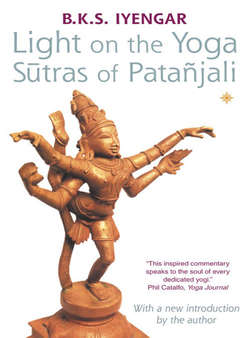Читать книгу Light on the Yoga Sutras of Patanjali - Литагент HarperCollins USD - Страница 18
Why practice and renunciation are essential
ОглавлениеAvidya (ignorance) is the mother of vacillation and affliction. Patañjali explains how one may gain knowledge by direct and correct perception, inference and testimony, and that correct understanding comes when trial and error ends. Here, both practice and renunciation play an important role in gaining spiritual knowledge.
Attachment is a relationship between man and matter, and may be inherited or acquired.
Non-attachment is the deliberate process of drawing away from attachment and personal affliction, in which, neither binding oneself to duty nor cutting oneself off from it, one gladly helps all, near or far, friend or foe. Non-attachment does not mean drawing inwards and shutting oneself off, but involves carrying out one’s responsibilities without incurring obligation or inviting expectation. It is between attachment and detachment, a step towards detachment, and the sadhaka needs to cultivate it before thinking of renunciation.
Detachment brings discernment: seeing each and every thing or being as it is, in its purity, without bias or self-interest. It is a means to understand nature and its potencies. Once nature’s purposes are grasped, one must learn to detach onself from them to achieve an absolute independent state of existence wherein the soul radiates its own light.
Mind, intelligence and ego, revolving in the wheel of desire (kama), anger (krodha), greed (lobha), infatuation (moha), pride (mada) and malice (matsarya), tie the sadhaka to their imprints; he finds it exceedingly difficult to come out of the turmoil and to differentiate between the mind and the soul. Practice of yoga and renunciation of sensual desires take one towards spiritual attainment.
Practice demands four qualities from the aspirant: dedication, zeal, uninterrupted awareness and long duration. Renunciation also demands four qualities: disengaging the senses from action, avoiding desire, stilling the mind and freeing oneself from cravings.
Practitioners are also of four levels, mild, medium, keen and intense. They are categorized into four stages: beginners; those who understand the inner functions of the body; those who can connect the intelligence to all parts of the body; and those whose body, mind and soul have become one. (See table 1.)
